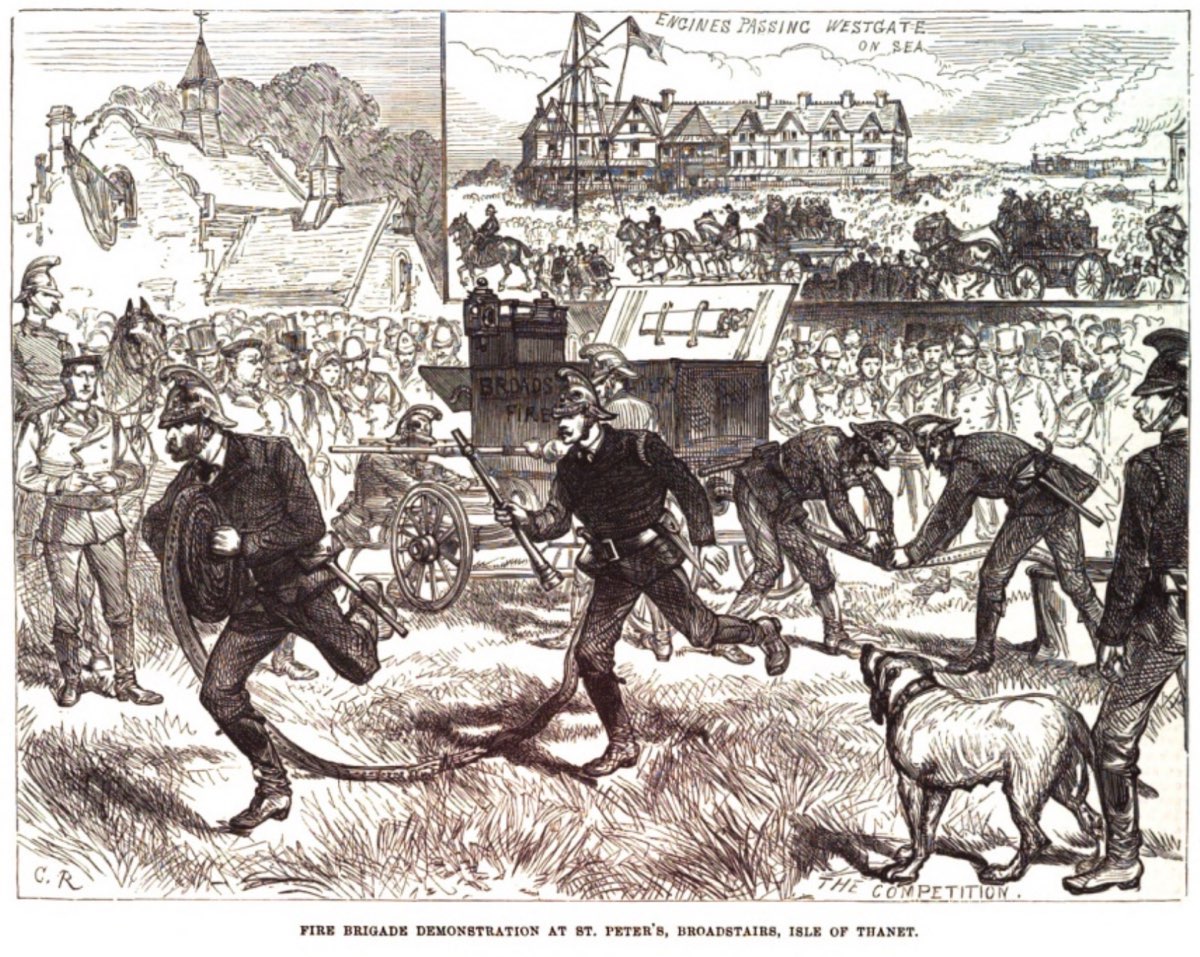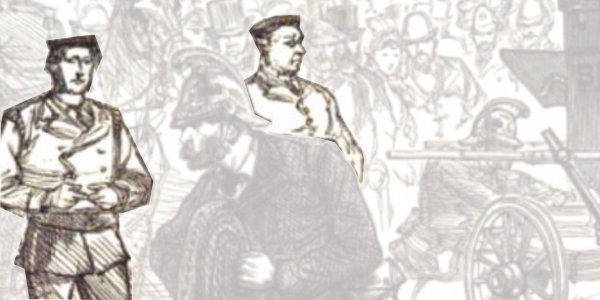Three Good Questions (and some answers)
Last month I invited you to imagine that while doing some historical research you’d found an article about the East Kent Fire Brigades published in the Illustrated London News on 27th September 1879. What could you learn from it? How many research rabbit holes would it lead you down? In what new directions might it take your writing? And, if you interrogated the image and words closely, what Three Good Questions would you want answers to first?

You can refer back to the full transcript of the article here.
My own Three Good Questions to get things started were:
- Does the top-right inset show a semaphore signal tower? (If so, what was its purpose? Was it just built for the demonstration or as a permanent feature in Westgate-on-Sea and other towns?)
- To what extent did Edmund Davis’s resort become a commercial success?
- Were Edmund Davis and Captain Henry Davis related?
According to the Margate Civic Society, “Deal’s four-storey semaphore tower was built in 1821 as part of a chain of 12 communication towers, which enabled the navy to send messages to the Admiralty in Greenwich.” So the semaphore tower pictured in the illustration is almost certainly a link in the chain of twelve.
I haven’t explored the commercial success or otherwise of Edmund Davis’s resort, but the place mentioned appears to be Ranelagh Pleasure Gardens. In Mick Glover’s St Peters and the Forgotten Ranelagh Pleasure Gardens (2014), they’re described (48 years earlier) as follows:
“The gardens cover an area of about two acres and a half, interspersed with splendid marquees, and a pleasing and beautiful series of cosmoramas; as many as two thousand persons have assembled here in one day. The ordinary price of admission is one shilling, for which refreshments to that amount are supplied. The amusements commence about four o’clock, and last till dusk, during which time and excellent band for quadrilles and country dances is in attendance. In the rear of the principal garden is a bowling green, kept in the best condition.”
I’ve admitted defeat when trying to find a familial connection between Edmund Davis and Captain Henry Davis. I can say for certain that they weren’t brothers. They may have been cousins, but it’s equally possible their shared surname is simply a coincidence.
Edmund Francis Davis was born in Chiswick in April 1845, the fifth of eleven children. His father, James Phineas Davis, was an attorney and solicitor. His mother, Eliza (also née Davis), was born in Montego Bay, Jamaica. Aside from his resort enterprise, Edmund was a solicitor like his father. He married Florence Aria, from Kingston, Jamaica, in 1867. They had three children and employed nine servants at their St. Peter’s Cottage home.
Florence died while the family was in Los Angeles, California, in October 1887, where Edmund seems to have set himself up as a real estate agent.
Edmund remarried in Boston, Massachusetts, only eight months later. His second wife, Matilda Hodges, originally came from Hamburg in Germany and was thirteen years his junior. Edmund died in Chicago, Illinois, the following year at the age of only 44. His children ended up back in England.
A potentially interesting avenue of further research would be to look at how the Davis and Aria families earned their livings in Jamaica in the latter 18th and early 19th centuries.
After reading the full article from 1879, a number of you suggested variations of the same Three Good Questions:
- Are the two uniformed gentlemen pictured just behind the leading fireman Captains Henry Davis and Sidney Wilmot?
- Were fire brigade uniforms standardised across the country at that time?
- What were their uniforms made of? (Did they provide much in the way of protection?)
The “Mr. Sidney Wilmot, captain of the Tunbridge Wells Fire Brigade” was Benjamin Sidney-Wilmot, aged 37. There’s a photograph of him taken around 1900 here, along with masses of genealogical information. He was born Benjamin Goldsmith in Cambridge in 1842 and changed his surname to Sidney-Wilmot shortly after his marriage to Beatrice Gilbert in 1866. The family moved to Kent around 1883. As well as founding the Tunbridge Wells Fire Brigade, Benjamin was a burgess of the town and acted as a political agent for the Conservative party.
Although it’s almost impossible to be sure, based on comparison with the 1900-era photograph, the right-hand figure in the illustration might well have been Captain Sidney-Wilmot. If so, then the figure on the left is probably Captain Henry Davis.

As for the questions about uniforms, according to Greater Manchester’s Fire Service Museum, “In 1866 the Metropolitan Fire Brigade in London was set up and this brigade had a huge influence on uniform design generally. They wore a blue double-breasted tunic, blue trousers made of waterproof cloth with black leather boots and a leather belt. They also wore a brass helmet. Many brigades adopted a variation of this uniform with a brass or leather helmet carrying the brigade’s emblem.”
If you know or discover any more about any of the people and places mentioned in this post, or if you’d like to suggest further questions, please do tell me via the comments below.



